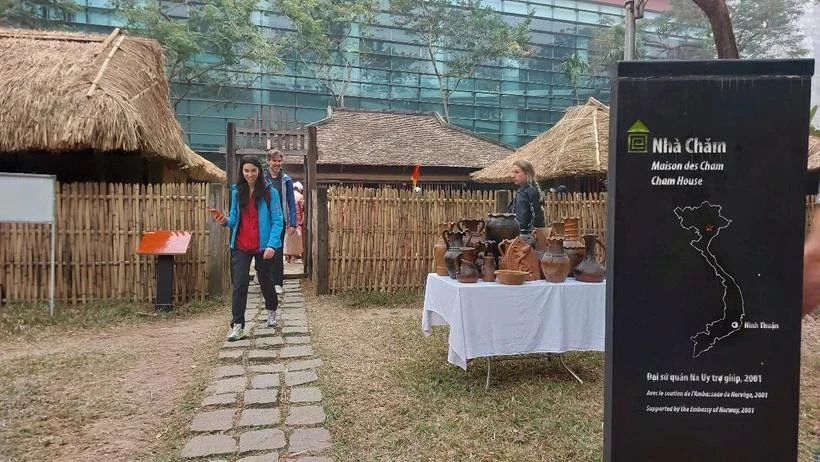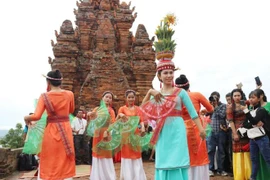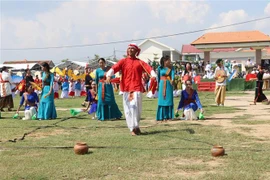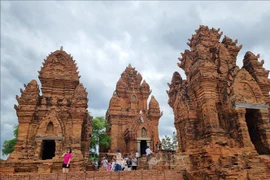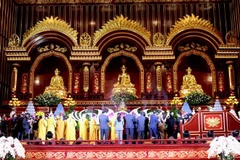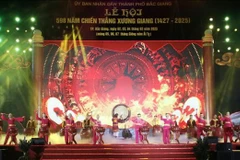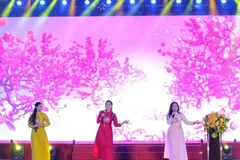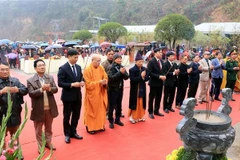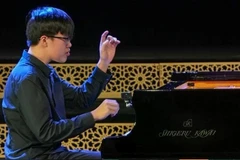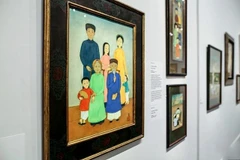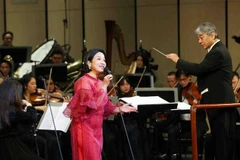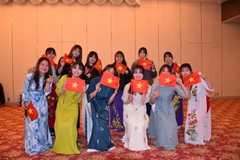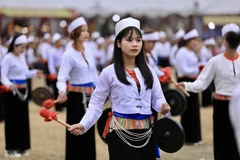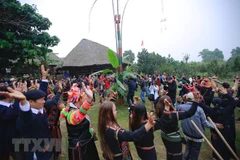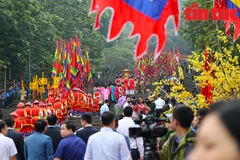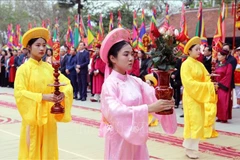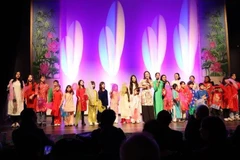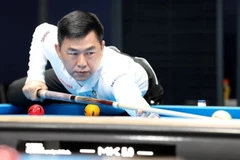Hanoi (VNA) – A Cham house cannot be complete without the full complement of five rooms, which cultural researcher Su Van Ngoc compared with five fingers on a hand or five elements of Feng Shui.
The Cham people treasure their houses as they preserve and continue the cultural traditions of their families and clans. Today, the preservation of Cham houses is of great concern to cultural stakeholders.
Five houses of Cham people
Head of the Bau Truc pottery village community-based tourism site management board Dang Chi Quyet has led a group of Cham people in the central province of Ninh Thuan to visit the Vietnam Museum of Ethnology (VME) in Hanoi to repair the museum’s traditional Cham houses.
Touching the walls and columns, Quyet was moved as if he was seeing his ancestors' traditional house again. His group provided consultation and support to the museum in repairing the Cham house with all their dedication, as they wished to preserve their ethnic heritage. Currently, there are no traditional Cham houses left in Bau Truc like the one at the VME.
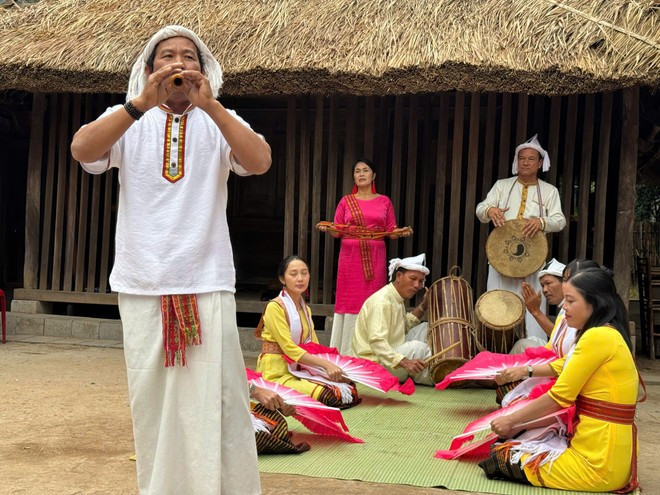
Quyet said the Cham people follow a matrilineal system, where daughters stay with their parents after marriage, and husbands move in with their wives.
In a matrilineal family, each couple has their own house. Therefore, the number of houses in a plot of land depends on how many married women in the family. Additionally, the number of houses also depends on the family's social status.
Generally, a Cham family has five houses including a kitchen house (thang ging), and a house for newlyweds (thang yơ) which is the most important house for the Cham people. As with all family rituals, funerals or weddings are held in the newlywed’s house. A side house (thang lam) is where the parents and unmarried siblings live, and an adjacent house (thang mư yâu) hosts the elder sister and her husband reside, until the younger sister gets married. The high house (thang tong) is home to the family’s elderly and dignitaries.
The aristocrats have two additional houses which are used to accommodate farming tools such as mandrels and shovels and household appliances such as grinders and rice-hulling mills.
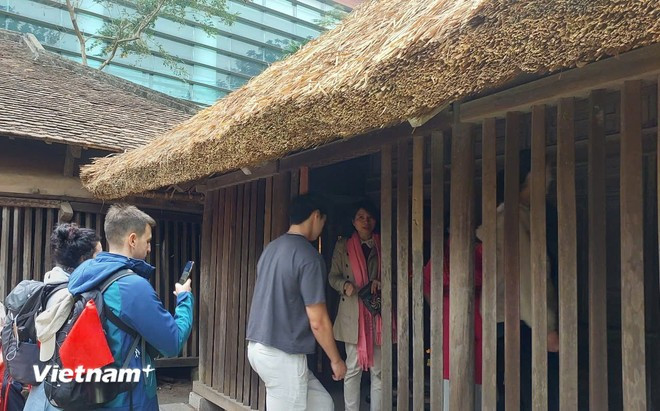
Chau Thi Tinh, 56 years old, from Cham minority group in Ninh Thuan province noted that most traditional Cham houses are made of wood, with thatched roofs. Everything is done meticulously, from setting up posts to choosing fences to mark the house's boundaries.
According to Tinh, the living spaces of the Cham people have undergone changes. Most Cham families today build houses based on their economic conditions, opting for simpler structures made of bricks and metal roofs. In Ninh Thuan, few families still retain traditional small houses.
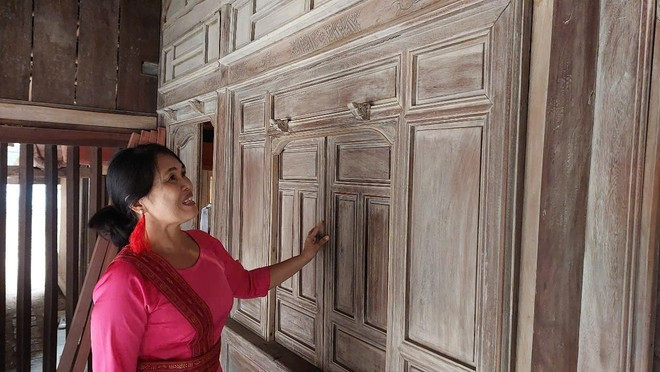
Heritage preservation
The Vietnam Museum of Ethnology preserves several Cham houses which were moved from Ninh Thuan.
The “thang lam” which was reconstructed in the museum in 2001 is the house of a family in Truong Tho village, Phuoc Hau commune, Ninh Phuocc district.
To date, this house has passed through five generations and is one of four “thang lam” aged over 100 years old still left in the locality. In 2004, the Vietnam Museum of Ethnology reconstructed the “thang mư yâu” which belonged to family in Huu Duc village, Phuoc Huu commune.
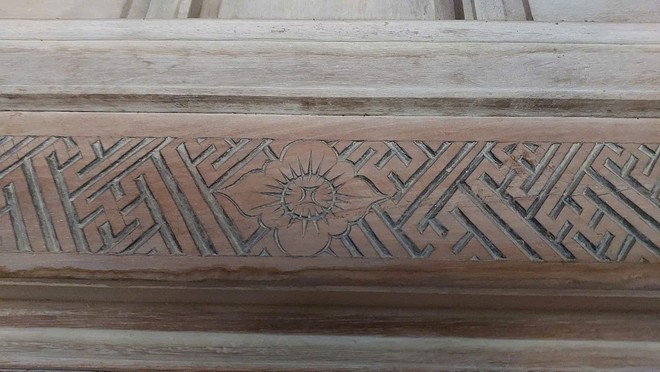
Recently, the museum invited a group of Cham people from the Bau Truc pottery village to the museum to introduce visitors to the life, architecture, and traditional arts of the Cham people. The group also assisted the museum in repairing traditional houses.
According to the museum’s deputy director Dr. Bui Ngoc Quang, to complete the repairs of the traditional Cham housing complex within a month, the museum had to prepare everything from the beginning of the year.
The museum had to buy thatch from families in the Vietnam-Laos border area, with each family contributing a few dozen kilogrammes. It also had to invite skilled craftsmen from the Cham community to make the roofs, from weaving the layers of thatch to binding the joints of the roof frame to ensure uniformity and aesthetics.
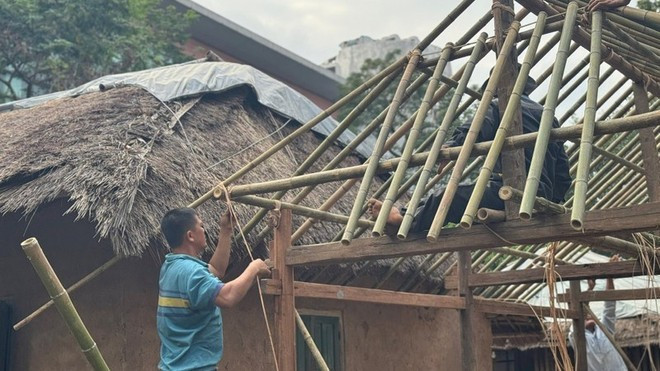
Quang said that the museum wants the restoration of a traditional house to be conducted by the people of that ethnic group, as they can best ensure both the technical quality and “infuse” the spirit and essence into the house.
Ethnology expert Dr. Vo Quang Trong emphasised the need to preserve images and data of original artifacts, as well as the techniques and knowledge of the community, to serve as a basis for reference and application in restoration and preservation work.
Trong affirmed that preserving cultural heritage is not only about maintaining traditional values but also a creative process that requires the involvement of all stakeholders, ensuring that the continuous flow of Vietnamese culture./.
